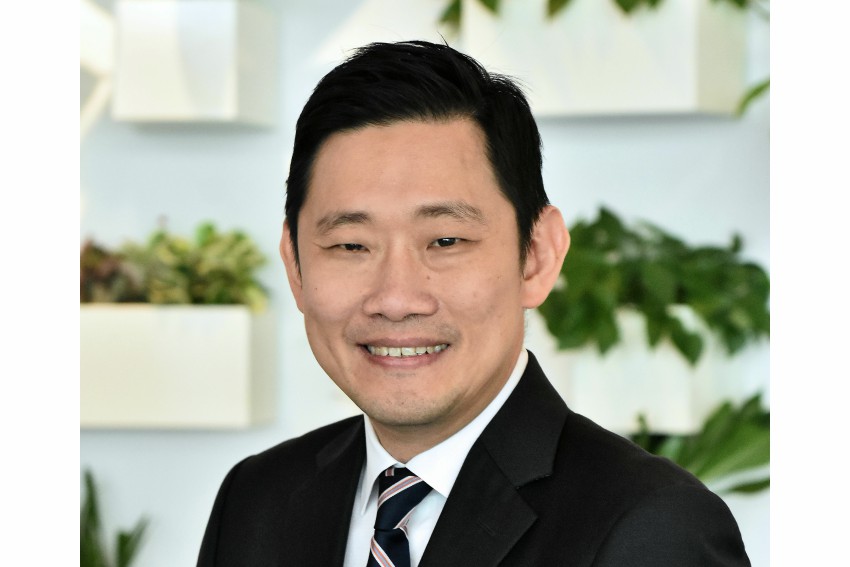

Kevin Wo, Managing Director of Microsoft Singapore, discusses how the tech giant is helping its clients in Singapore and across the ASEAN leverage on the latest digital technologies to enhance their businesses. He also discusses how Microsoft is engaging in Singapore’s Smart Nation initiative by collaborating on the SME co-digital program.

ASEAN is the fastest-growing bloc in the world. What potential do you see from the ASEAN region and as such the role it plays within Microsoft's future?
Earlier in 2018, we collaborated with IDC Asia-Pacific on a study titled Unlocking the Economic Impact of the Digital Transformation in Asia Pacific. The study looked at how the digital transformation is impacting three pillars: economy, business and society.
This study was done across 1,560 respondents across 15 countries including Australia, China, Hong Kong, India, Japan, Korea, New Zealand and South East Asia. Based on our study, in 2017, we estimate that about 7% of the region’s GDP was derived from digital products and services. By 2021, we expect this number to grow to 16%. In terms of dollar value, we think the whole digital economy is going to contribute an additional US$1.16 trillion to Asia Pacific’s GDP.
By 2021, the digital transformation will also add an estimated US$10 billion to Singapore’s GDP, and increase the growth rate by 0.6% annually. Whether it is an increase in revenue or in productivity, reduction of cost, even improvement in customer advocacy, these are key benefits that our customers are seeing when they embark on the digital transformation within their organization.
When we work with our customers, we see four key potential areas where digital transformation will help them realize their ambitions. First, Microsoft helps our customers to leverage technology to better connect and engage their customers. Secondly, we work very closely with companies before they interact with their customers. We make sure they are as ready as can be and see how they can empower their employees to be more digitally-ready to serve.
The third is really about how we drive more agility within the organization by optimizing their operations. The fourth one really is about remodeling their business so that they can better monetize or create new products and new services.
We are a partner-led company and a very big part of it is how we continue to nurture the whole ecosystem of partners that we have, along with institutions and research organizations to drive innovation through these partnerships in order to help transformation happen. This is the way we think about engaging in the ASEAN.
How can soft infrastructures such as e-commerce, digitalization and other technologies help the region maximize its economic potential?
At Microsoft, one of our biggest focuses is how to create a cloud platform. We provide the opportunity for a lot of companies, whether they are sitting in Singapore or across the region, to leverage our cloud platform to grow their business without having to make large infrastructure investments.
A fundamental challenge in ASEAN is obviously the diversity – not just culturally but also in terms of economic development and technology adoption. How can you integrate the region to bring collective success? From the digital side, it will be about a trusted platform where people can trust and feel comfortable, from areas of trade to healthcare.
Another bigger issue is around cyber-security. As a technology provider, we focus on making sure we provide a trusted platform where companies can come on board quickly and be able to use it to reach out to their markets.
To what extent is the Smart Nation initiative a symbol of the digital transformation of Singapore? How do you collaborate specifically within the smart nation initiative?
If you look at the broad umbrella of smart nation, you can clearly see two buckets. One which is the digital government side – how we support the whole of Singapore by enabling society with technology to make Singapore a better place to work and live.
The other aspect is the Info-communications Media Development Authority (IMDA), whom we are partnering with in the SME co-digital program. SMEs are a big focus for Singapore as 99% of the companies here are SMEs. SMEs have different challenges. We need to further amplify the understanding of the market needs, the kind of technology and challenges they need and how can we help them.
When it comes to smart nation, this Industry Transformation Map is actually a good anchor point for the industry transformation as a big part of it is on technology. It cuts across from government agencies to the trades associations, to MNCs to SMEs. By bringing the whole ITMs to six clusters, I think you see a lot more synergy.
Being a tech company, at Microsoft we discuss how technology is transforming industries, for example, the architecture engineering and construction industry. Recently, we were in partnership with Singapore’s Board of Architects. They invited us to their annual meeting where for the first time we showcased how technology can impact design to build. Architects, construction engineers and people who do facility management, it is impacting them right from the design to construction. They saw how technology also impacts their industry.
0 COMMENTS